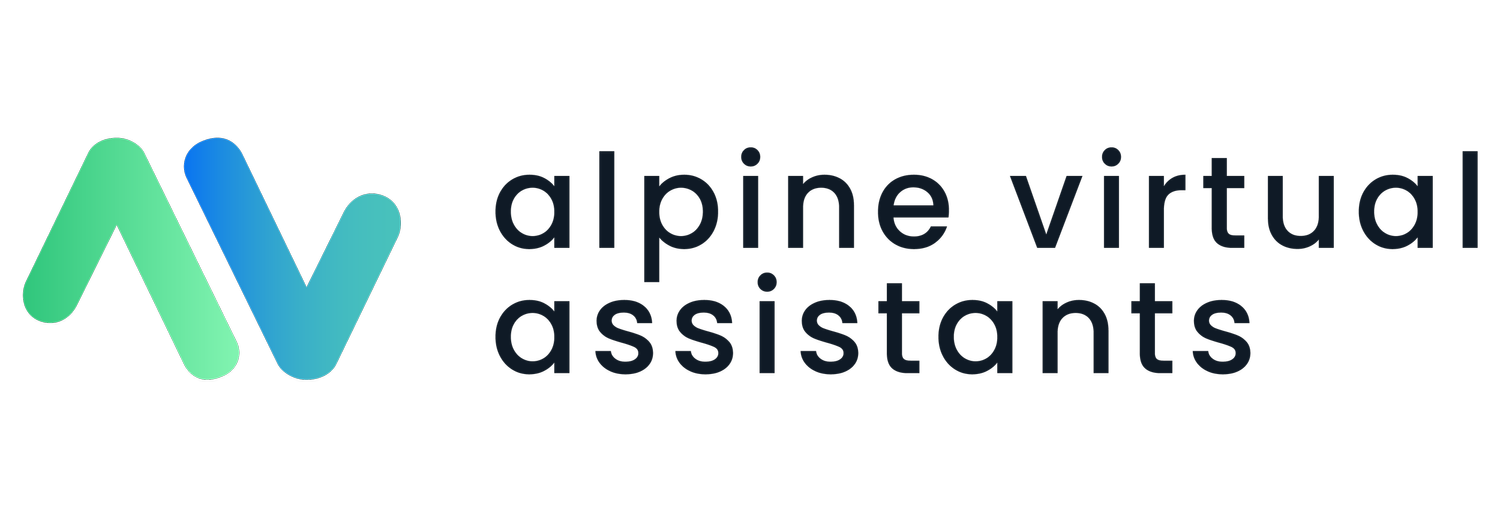6 Common Struggles of Remote Teams (and How to Solve Them)
You’re leading a team spread across Denver, Dubai, or maybe even Des Moines, and you’re feeling the strain, Slack pings at midnight, Zoom calls that go nowhere, and a nagging sense that you’re herding cats. I’m Nicole Magelssen, founder of Alpine Virtual, and I’ve been in those trenches, managing remote teams while trying to keep my sanity in Denver’s fast-paced scene. Distributed teams are the future, but they come with real challenges. I’ve got you covered.
At Alpine Virtual, we’ve helped hundreds of business owners tame the chaos of remote work with virtual assistants. In this post, I’ll break down six common hurdles of managing distributed teams, share practical ways to turn those obstacles into wins, and highlight 2025 trends to keep your team thriving.
1. Communication Gaps Across Time Zones
Your team’s scattered across time zones, and syncing up feels like a logistical nightmare, not to mention the miscommunications are piling up. I tried to hire support with a twelve-hour time difference, and once lost a week on a project because my remote designer and I were emailing past each other across such a large time difference. A VA can be your communication hub, managing shared calendars, scheduling meetings that work for everyone, and summarizing key updates in a central doc. They can use tools like World Time Buddy to find overlapping hours and Slack to pin critical messages. Because VAs are the communication hub, we’ve found it best to hire VAs only in US time zones. This has saved us a lot of heartache and delayed projects.
Action Step: Have your VA set up a shared Google Calendar with team time zones and a Slack channel for daily stand-ups. Give them a one-page guide: “Schedule meetings between 10 a.m. MST and 2 p.m. MST, summarize action items in a Google Doc.” Takes about 2 hours a week.
2. Zoom Fatigue and Meeting Overload
Remote teams love meetings, but too many Zooms leave everyone drained. When I was a VA I would sit in those hour-long calls that could have been an email (or iddn’t need to happen at all) and wonderred why my client was wasting money on all of us being there. I know they were burining him out and taking up his precious time as well. A VA can streamline meetings by creating agendas, moderating calls, and summarizing notes so that only key players attend. They can also suggest async updates via Loom videos or Trello boards to cut unnecessary meetings. A marketing agency we work with had their VA reduce weekly meetings from five to two, saving 10 hours a week.
Action Step: Ask your VA to review your meeting schedule and propose cuts. Have them create a template: “10-minute agenda in Google Docs, record decisions, share via Slack.” Set a rule: no meeting over 30 minutes unless critical. Takes 1-2 hours to set up.
3. Lack of Team Connection and Culture
Distributed teams can feel like strangers, with no watercooler chats or happy hours to build bonds. Without connection, morale tanks and turnover spikes No one wants to feel like they are “just a cog” with no team vibe. A VA can help foster culture by organizing virtual team-building, like trivia on Zoom or a “show your workspace” X thread. They can also manage recognition programs, like shout-outs in a team newsletter.
Action Step: Have your VA plan one monthly team-building activity (like a thirty-minute virtual game). Give them a guide: “Keep it fun, budget $50/month, share recaps on Slack.” Takes 2 hours a month.
4. Inconsistent Task Tracking and Accountability
Without clear task tracking, remote work becomes a black hole, deadlines slip, and you’re left wondering what anyone’s doing. Its not uncommon to think your team is on track, only to find out half the tasks were stuck because no one knew who owned what. A VA can manage project tools like Asana or ClickUp, assigning tasks, setting deadlines, and sending reminders. They can also create weekly progress reports to keep everyone accountable.
Action Step: Have your VA set up a Trello board with columns like “To Do,” “In Progress,” and “Done.” Provide a guide: “Assign tasks weekly, check progress daily, flag delays.” Takes 3 hours a week to maintain.
5. Overwhelm from Admin and Repetitive Tasks
Leading a distributed team means you’re often stuck handling admin work like approving expenses, updating CRMs, or chasing invoices, while strategy takes a backseat. I used to spend 12 hours a week on these tasks until a VA took them off my plate. Your VA can handle expense tracking, CRM updates, or client follow-ups, freeing you to focus on big-picture leadership. One of our clients, a Denver consultant, had their VA manage invoice follow-ups, recovering $5,000 in overdue payments.
Action Step: List your top three admin tasks (e.g., expense reports, email sorting). Have your VA take them over with a guide: “Use QuickBooks for expenses, categorize daily, report weekly.” Takes 2-4 hours a week.
6. Keeping Up with Remote Work Tools and Tech
Remote teams rely on tools like Slack, Zoom, or Monday.com, but learning and managing them can be a headache. My team and I were just discussing why each project management board is the same but has to have a completely different setup and vocabulary. It’s exhausting. A VA can research, set up, and manage these tools, ensuring your team stays connected and efficient. They can also train team members with quick tutorials or troubleshoot issues.
Action Step: Have your VA audit your tools and suggest upgrades (e.g., “Switch to Zoom Pro for breakout rooms”). Provide a guide: “Test tools, create a one-page user guide, train team via Loom.” Takes 3-5 hours initially.
2025 Remote Work Trends to Watch
Remote work is evolving, and VAs are key to staying ahead. In 2025, 70% of businesses plan to increase outsourcing, per recent surveys, focusing on high-value tasks like project management and tech support. Specialized VAs, like experts in tools like Asana or HubSpot, are up 35% in demand. AI-assisted VAs are trending, using tools to automate data entry or analyze team performance, but their human insight keeps them vital. Flexible VA plans let you scale hours as needed, saving you from overcommitting to full-time hires.
Here’s a stat: businesses using VAs for remote team tasks see a 40% boost in efficiency, per a 2024 study. That’s more time to lead your team, generate sales, or have dinner with your family.
Key Tip: Create a VA Communication Playbook
To conquer these hurdles, give your VA a one-page communication playbook. Outline tools (e.g., Slack for updates, Trello for tasks), response times (e.g., reply within 24 hours), and team priorities (e.g., client tasks first). We created a clear communication playbook when everything in our team felt scattered. Ithas helped my team know who owns what, what to escalate, and has saved me when my VA was out on vacation.
Lead Smarter, Not Harder
Managing distributed teams doesn’t have to feel scattered. With a VA handling communication, meetings, culture, task tracking, admin, and tools, you can lead with confidence and focus on what matters - growing your business. At Alpine Virtual, we’ve helped remote leaders go from overwhelmed to unstoppable, and we’re here to help you do the same. Ready to make your distributed team thrive? We’d love to help! Let’s chat.

